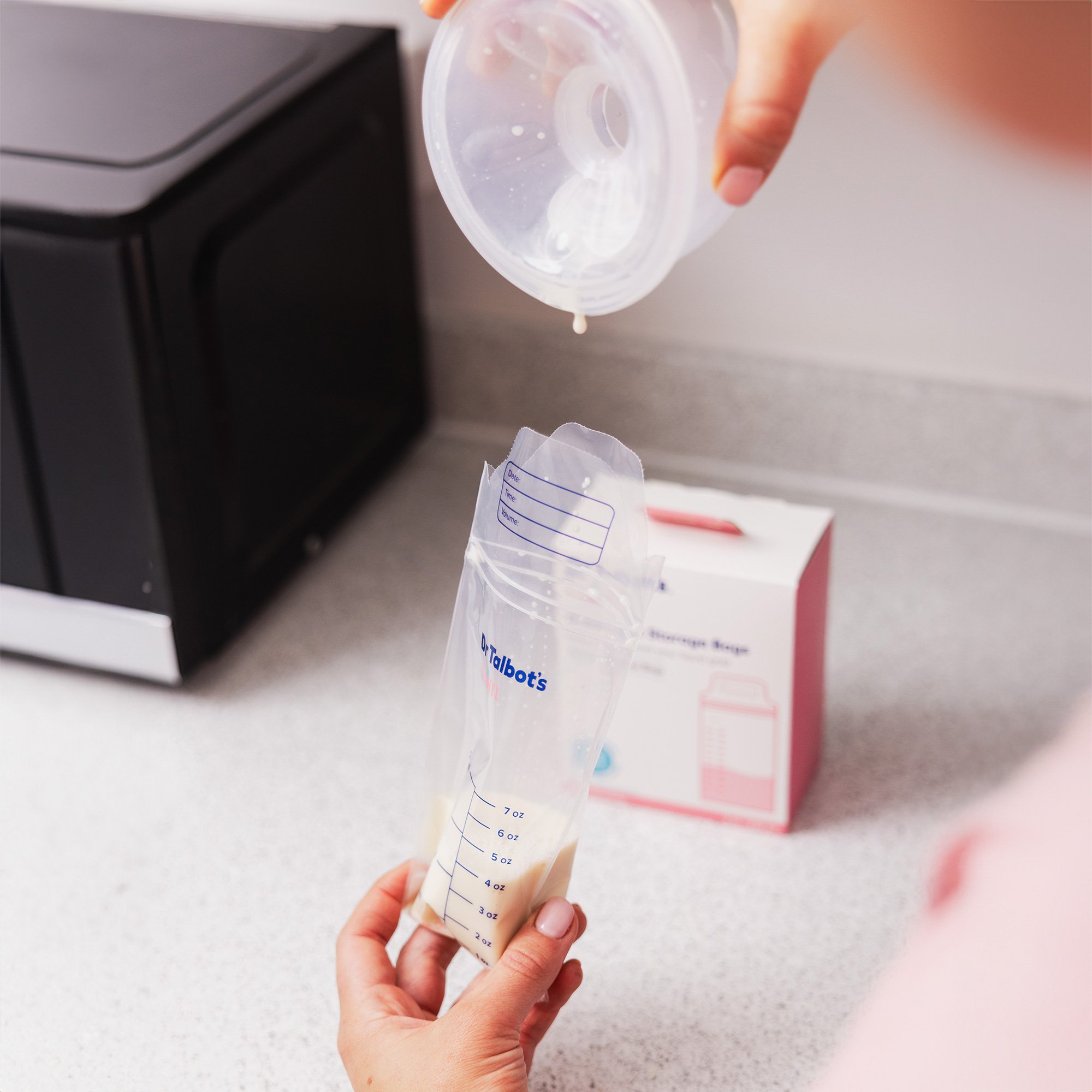Proper breast milk storage is a crucial aspect of breastfeeding. Knowing how long breast milk can last in the refrigerator and how to store it correctly ensures your baby receives the highest quality nutrition. Whether you’ve just pumped or need to store milk for later use, it’s essential to understand the proper guidelines to maintain the safety and freshness of your milk.

Why Proper Breast Milk Storage Matters
Breast milk is full of vital nutrients and antibodies that help boost your baby's immunity and promote healthy growth. However, for milk to maintain its nutritional benefits and safety, proper storage is key. If breast milk is stored incorrectly, it can spoil or lose its beneficial properties. Refrigeration plays a significant role in preserving both the quality and safety of breast milk.
By understanding how to store milk and how long it can be kept, you can ensure that your baby gets the maximum benefits from every feeding while also avoiding unnecessary waste.
How Long Can Breast Milk Last in the Refrigerator?
Freshly expressed breast milk can last up to 4 days in the refrigerator at a temperature of 40°F (4°C) or below. This is the recommended guideline from health experts, including the CDC, to ensure that milk remains safe and nutritious for your baby.
Factors That Impact Breast Milk Freshness
Several factors affect how long breast milk can last in the refrigerator, including:
1. Refrigerator Temperature Consistency
It’s important to maintain a consistent temperature of 40°F (4°C) in the fridge. If the temperature fluctuates, it could shorten the milk’s shelf life and affect its freshness.
2. Storage Container Type
Use clean, sterilized containers like BPA-free plastic or glass bottles or bags designed specifically for breast milk. This ensures that the milk stays uncontaminated and preserves its nutrients.
3. Freshly Pumped vs. Thawed Milk
Freshly pumped milk can last up to 4 days in the refrigerator, while thawed milk should be used within 24 hours. This is because freezing and thawing can slightly degrade the milk’s quality and reduce its shelf life.
Note: After your baby finishes feeding, any leftover milk should be used or discarded within 2 hours to prevent contamination or spoilage.
How to Store Breast Milk Safely in the Refrigerator
Follow these steps for safe storage to maintain the freshness and quality of breast milk:

Label the Milk
Label each container with the date and time of pumping. For added convenience, you can also use breast milk freshness sensors. This will help you keep track of how long the milk has been stored and ensure that you use the oldest milk first.
Store Milk at the Back of the Refrigerator
Place the milk at the back of the fridge, where the temperature is the most consistent, not on the door, where it fluctuates with frequent opening.
Signs That Stored Breast Milk May Have Gone Bad
Despite following the correct storage guidelines, it’s important to be able to identify when breast milk has spoiled. Here are a few signs to watch out for:
Changes in smell or taste: Spoiled breast milk may have a sour, rancid, or unpleasant odor.
Separation that doesn’t mix: While it’s normal for milk to separate into layers of fat, if it doesn’t mix back together after gently swirling, it could indicate that the milk is no longer fresh.
Discoloration or unusual texture: Any changes in color (from white to yellowish or brown) or texture (clumpy or grainy) suggest that the milk has spoiled.
If any of these signs are present, it’s best to discard the milk.
Tips for Busy Moms to Maximize Storage Efficiency
As a parent, finding ways to make the most of your breast milk storage can save you time and stress. Here are a few tips to help:
Use organized storage racks: Store your milk in designated fridge racks or bins to keep everything organized and accessible.
Set reminders: Use your phone or a calendar to remind you when stored milk needs to be used or transferred before it expires.
Consider milk storage tracking tools: Some products and apps can help track the age and volume of your milk, helping you optimize the use of your frozen or refrigerated milk.
FAQs: How Long Can Breast Milk Last in the Refrigerator?
How do I know if breast milk in the refrigerator is still good?Check the milk for any signs of spoilage, such as changes in smell, taste, or texture. If the milk seems off, discard it.
Can I mix freshly pumped milk with refrigerated milk?Yes, but only if the freshly pumped milk is cooled to the same temperature as the refrigerated milk. Never mix fresh milk with milk that has already been stored for more than a day.
What happens if I accidentally leave breast milk in the refrigerator for more than 4 days?If breast milk has been stored in the refrigerator for longer than 4 days, it should be discarded. For safety reasons, it’s essential to use the milk within the recommended time.
Is it safe to refreeze breast milk that was stored in the refrigerator?No, once breast milk has been thawed or stored in the refrigerator, it should not be refrozen. This could affect the milk’s quality and introduce bacteria.
Does the type of container affect how long breast milk stays fresh in the refrigerator?Yes, using BPA-free plastic or glass bottles specifically designed for breast milk storage ensures the milk stays safe and preserves its nutrients for the maximum time.
Conclusion
Knowing how long breast milk can last in the refrigerator and following proper storage practices is essential for keeping your baby’s milk fresh and nutritious. By storing milk in the fridge at 40°F (4°C) or below and using sterilized containers, you can ensure that your baby receives the best nutrition.
Be sure to label and organize your milk, keep track of expiration dates, and always be on the lookout for signs of spoilage. By following these tips, you’ll make feeding time seamless and ensure your baby’s health is always supported.